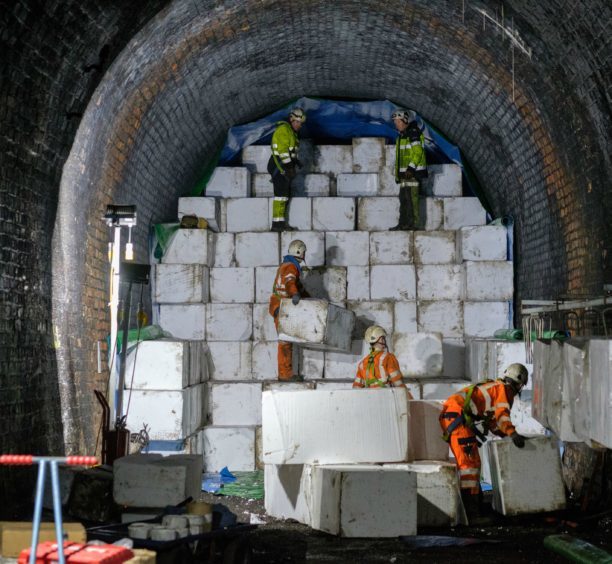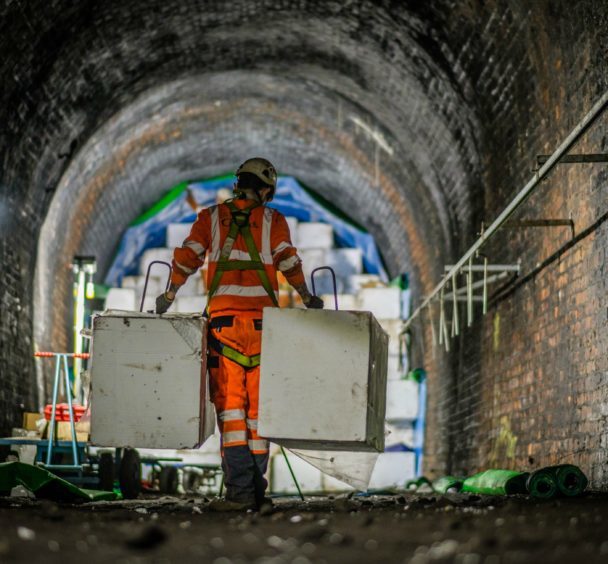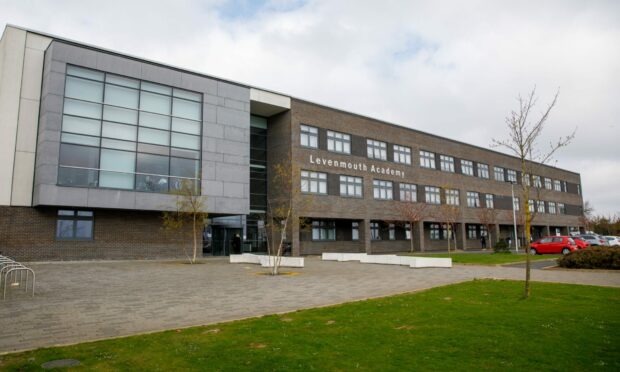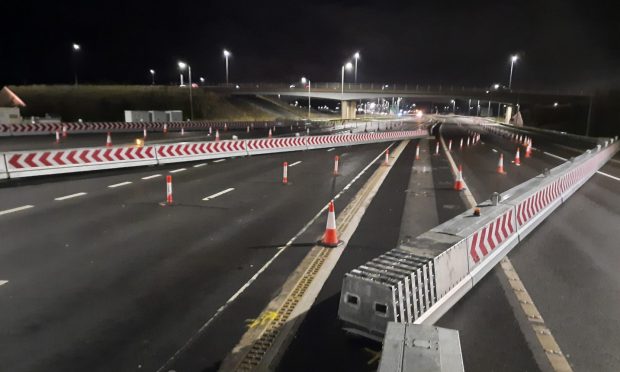Engineers looked like they were playing a giant game of Lego as they dug up an unusual solution to make an abandoned railway tunnel near the Forth bridges safe.
They have filled the 420m tunnel with polystyrene blocks to ensure the stability of the approach roads to the Forth Road Bridge.
The tunnel originally formed part of the Dunfermline to North Queensferry railway line, providing a link to the ferry service until the opening of the Forth Bridge in 1890 and continuing in limited use for freight until 1954.
Both ends of the vaulted tunnel, running underneath the A9000 and B981, had been sealed off and the cuttings filled in, so the only remaining means of access was via a vertical shaft at each end.
Engineers from Amey, the Forth Bridges operating company, carried out a structural inspection in February 2016, finding that parts of the tunnel were degrading and in need of preventative maintenance.
Due to the limited depth of cover above the tunnel, a failure could have had an impact on the roads overhead.
The decision was taken to fill the tunnel with expanded polystyrene blocks manufactured to a specific compressive strength capable of resisting the weight of rock and tunnel lining in the event of a localised failure.

Unlike concrete or aggregate material, EPS blocks can also be easily removed if the tunnel ever needs to be reopened.
Blocks were pre-cut to size and weight, allowing work to be carried out from the access shaft at the north end of the tunnel.
This kept construction traffic out of North Queensferry for the bulk of the work.
They were then passed down the shaft and moved to the workface on a specially designed monorail.
The tunnel was lined with a hydrocarbon resistant membrane, before 21,342 EPS blocks were installed.
As a momento, children from Burntisland and Lauriston primaries buried two time capsules among the blocks.
Once the tunnel was complete the access shafts were filled with concrete to seal it.
Amey’s Mark Arndt said: “This has been an unusual and interesting project where we’ve learned something new about the history of the area as well as gaining the satisfaction of making a disused tunnel safe.”
He added the team deserved credit for coming up with an innovative solution which minimised cost and impact on the local community.
“It’s a real measure of success that most local residents were not even aware this work was taking place, despite the tunnel emerging within metres of homes in North Queensferry.”










